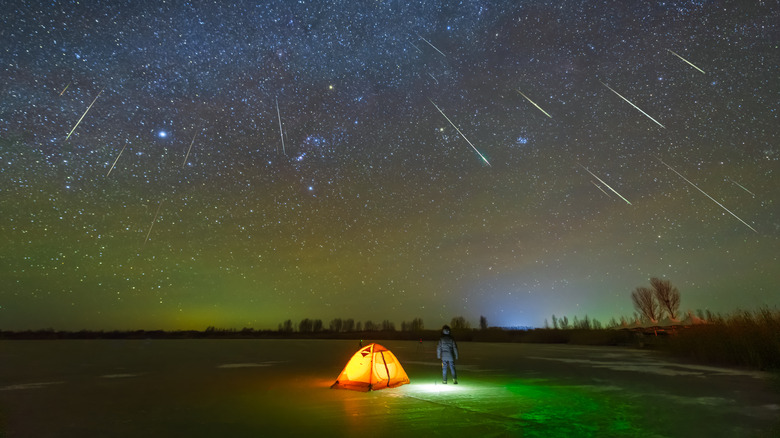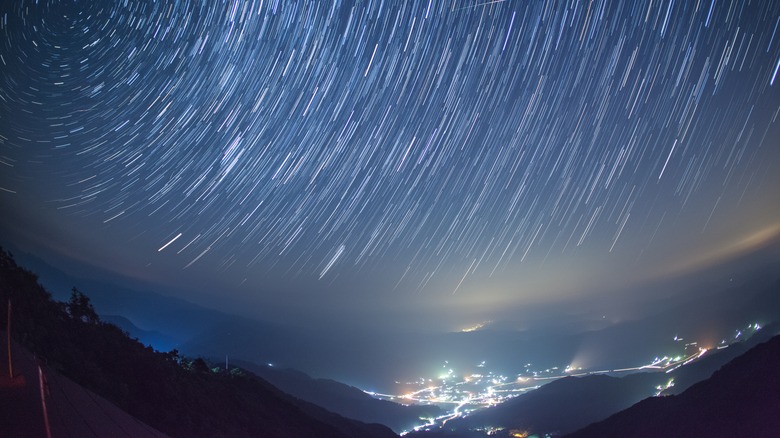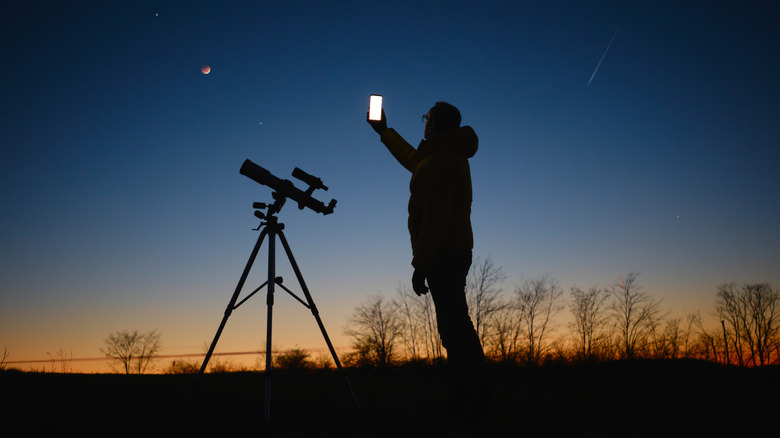Top Tips For Viewing The 2024 Perseid Meteor Shower
2024 has turned out to be a spectacular year for those who love to gaze at the sky, with events such as the 2024 solar eclipse, stunning displays of the northern lights, and now the Perseid meteor shower adding to the excitement.
The Perseid meteor shower is an annual celestial event that has captivated stargazers for centuries. Named after the constellation Perseus, the shower is renowned for its dazzling displays and the sheer number of meteors visible during its peak. It is caused by debris from Comet Swift-Tuttle, which orbits the sun every 133 years (via The Planetary Society). As Earth passes through the debris left by the comet, tiny particles burn up in our atmosphere, creating bright streaks of light.
The Perseids promise a breathtaking show, making it a highlight of the astronomical calendar. But it isn't only a spectacular visual experience. It connects us with the vast, dynamic nature of our solar system. To make the most of this astronomical phenomenon, here are some top tips for viewing the 2024 Perseid meteor shower.
Best locations and times for viewing
The 2024 Perseid meteor shower began on July 14 and is expected to remain active until September 1, 2024, according to Earth Sky. The shower will peak the night of August 12, with the best chances of viewing occurring just before dawn on August 11, 12, and 13. This is because the moon will be in a waning crescent phase on these dates so its light will be less intense. Also, the number of meteors increases as the night darkens, so the chances of you spotting them is higher in the early morning, before the sun rises.
The Perseid meteors radiate from the constellation Perseus, which will rise in the northeastern sky. However, you don't need to focus strictly upon this area to view them. Countries in the Northern Hemisphere and parts of Europe typically have the best views due to their higher latitudes (via The Planetary Society), but observers in other parts of the world can still enjoy the shower. Meteors can fly through any part of the sky, so a wide unobstructed view is ideal.
No matter where you are, to maximize your chances of fully appreciating the Perseids, find a location with minimal light pollution. Urban areas with bright city lights diminish your ability to see meteors. Seek out rural locations, national parks, or designated dark sky reserves where the sky is at its darkest. Be sure to check their hours of operation, or look out for parks that may be hosting viewing events!
Preparation and safety tips for viewing
While you don't need any special equipment to enjoy the Perseid meteor shower, bringing a few essentials can enhance your experience. No matter where you live, even in August, nighttime temperatures can drop, so dress in layers to stay warm. On top of that, check the weather forecast before you head out. On a cloudy night, you'll want to save yourself on a trek, only to be disappointed. If the skies are clear, a reclining chair or blanket will allow you to comfortably lie back and look up at the sky, and save your neck a lot of strain. Keep hydrated and have snacks on hand for the long viewing session.
Beware of animals and wildlife nearby. Remember to be mindful and practice Leave No Trace, so as not to disrupt the natural environment. If you're in a rural area, natural insect repellent can be a lifesaver.
Since lights can affect your viewing experience, give your eyes time to adjust to the darkness. Avoid looking at your phone or other bright lights for at least 20 minutes before you start viewing, per Space. If you need to read a map, try and use a red flashlight because it has minimal impact on night vision (via Optica). If you want to photograph the meteor shower, NASA recommends using a camera with manual settings and a tripod to capture stable, long exposures of the night sky. This will increase your chances of getting stunning shots of the meteors.


